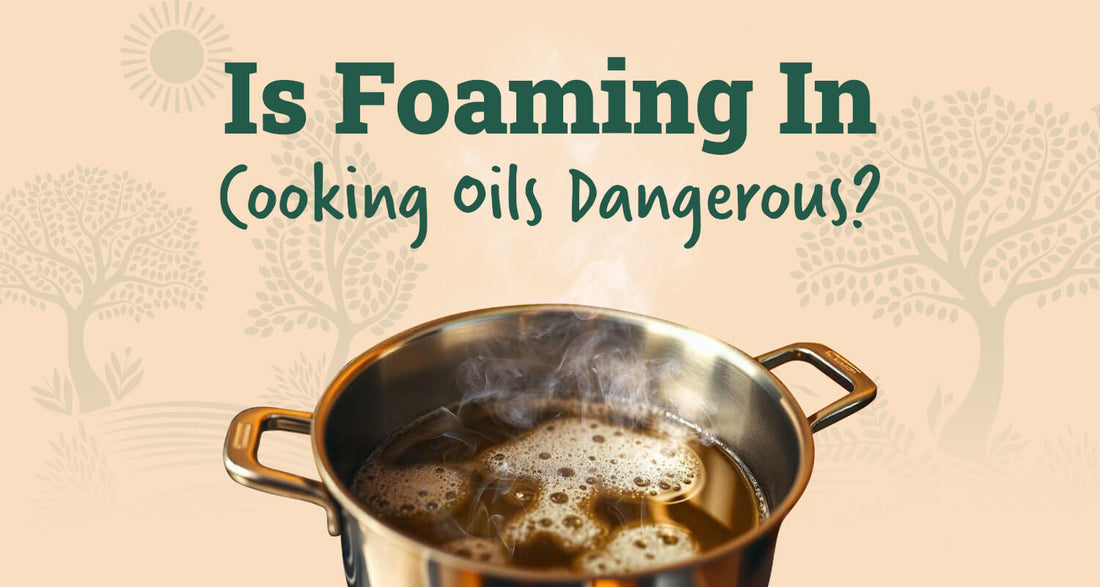
Understanding Foaming in Cooking Oil: Causes and Solutions
Share
Experiencing foaming in your cooking oil can be confusing for both home cooks and professional chefs. It is often mistaken for a sign of contamination or poor quality oil. However, this is usually not the case, especially with wood-pressed oils.
This article will explain the causes of oil foaming and offer practical tips on managing it.
What Causes Cooking Oil to Foam?
Natural Properties of Wood-Pressed Oils
Foaming is commonly seen in unrefined, cold-pressed or wood-pressed cooking oils, which are known for their rich nutritional content and robust flavors. These oils contain natural compounds such as gums and mucilages. These compounds can trap air, forming foam when the oil is heated, particularly when cooking water-containing foods like onions.
Temperature Effects on Cooking Oil
The temperature of the oil significantly influences foaming. As cooking oil approaches its smoke point, its molecules break down, releasing water and volatile substances that contribute to foam formation. Adding cold or moist food to hot oil intensifies this effect, as the moisture quickly turns to steam, increasing the foam.
Interaction with Water-Rich Foods
Water-rich foods can cause significant foaming when added to hot oil. This effect is more noticeable in wood-pressed oils due to their higher moisture content and natural gums, which promote foaming.
Quality and Characteristics of Wood-Pressed Oils
Wood-pressed oils are produced through traditional methods that maintain low temperatures, preserving natural antioxidants, enzymes, and structures that contribute to foaming. Foam presence often signifies minimal processing and high quality, not a flaw.
Setting the Right Expectations
When using wood-pressed oils, a certain amount of foaming is normal and indicates the oil's purity and minimal processing. These oils are ideally used for medium-heat cooking or as dressings to fully appreciate their flavour and health benefits.
When to Worry About Foaming in Cooking Oil
Persistent and excessive foaming can be a sign of overheating or unsuitability for the cooking method used. If the oil also smokes heavily, it may have surpassed its smoke point, potentially degrading its quality and forming harmful compounds.
Tips for Managing Foaming in Cooking Oil
-
Proper Heating: Carefully manage the temperature when using wood-pressed oils to minimize foaming.
-
Choosing the Right Cookware: Opt for heavy-bottomed stainless steel (SS 304) cookware, ideal for cooking with wood-pressed oils.
-
Selecting the Right Oil: Choose oils suitable for different cooking techniques to reduce foaming issues.
-
Regular Maintenance: Keep cooking surfaces and oils clean and dry to prevent excessive foaming, especially with wood-pressed oils.
Conclusion
Foaming in wood-pressed oils is a natural characteristic of their minimal processing and is not indicative of a defect. At Anveshan, we are proud to offer a variety of wood-pressed oils that not only enhance your culinary creations but also bring health benefits, assuming proper usage.
Discover Our Range
Learn more about our wood-pressed oils and select the ideal option for your cooking needs by visiting our product range.












 You saved ₹-48 on this order
You saved ₹-48 on this order